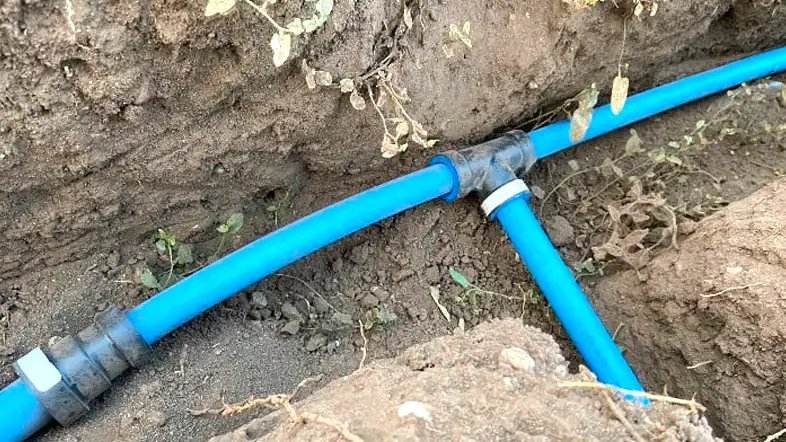Introduction
Burying a garden hose underground is a smart way to maintain a tidy garden space while ensuring efficient watering. Many gardeners wonder if it’s safe and practical to hide hoses beneath the soil. This article explores the benefits, methods, and precautions for burying garden hoses underground. Whether you want to reduce tripping hazards, protect your hose from weather damage, or create a seamless irrigation system, understanding the right techniques is vital.
We will cover the best types of hoses for underground use, installation steps, maintenance tips, and common concerns to help you decide if this method suits your garden. With expert advice and practical insights, you can create a reliable and low-profile watering setup that enhances your garden’s health and aesthetics.
Why Bury a Garden Hose Underground?
Benefits of Underground Hoses
- Protection from UV and weather damage: Burying hoses shields them from harmful sunlight and temperature extremes, prolonging hose life.
- Reduced tripping hazards: Concealing hoses underground prevents accidents and keeps pathways clean.
- Improved garden aesthetics: No visible hoses means a neater, more organized garden appearance.
- Consistent water temperature: Underground hoses maintain cooler water temperatures, benefiting sensitive plants.
Considerations Before Burying
- Not all hoses are designed for burial. Using the wrong hose can lead to cracking or leaks.
- Buried hoses are harder to access for repairs or replacements.
- Soil type and drainage affect hose longevity and effectiveness.
Choosing the Right Hose for Underground Use
Types of Hoses Suitable for Burial
- Soaker hoses: Made of porous material, they release water slowly and are commonly buried shallowly beneath mulch or soil.
- Polyethylene tubing: Durable and flexible, this tubing is often used in drip irrigation systems underground.
- Heavy-duty rubber hoses: Some are rated for underground use but verify manufacturer specifications.
What to Avoid
- Standard vinyl or lightweight garden hoses are not suitable for burial.
- Avoid hoses with metal fittings prone to corrosion.
How to Bury a Garden Hose Underground: Step-by-Step Guide
Materials Needed
- Suitable underground hose (soaker or polyethylene tubing)
- Shovel or trenching tool
- Hose connectors and clamps
- Teflon tape for leak-proof fittings
- Mulch or soil to cover the hose
Installation Steps
- Plan your layout: Map the route where you want the hose buried, avoiding tree roots and utility lines.
- Dig a trench: Create a trench 6-12 inches deep depending on hose type and local climate.
- Lay the hose: Place the hose in the trench carefully avoiding kinks.
- Connect fittings: Use proper connectors and seal joints with Teflon tape.
- Test for leaks: Turn on water to check for leaks before covering.
- Cover the hose: Backfill the trench with soil or mulch, pressing gently to avoid damage.
Tips for Success
- Use a timer with your irrigation system for consistent watering.
- Mark hose paths with garden flags or string to avoid accidental digging.
- Consider installing a shutoff valve nearby for easy maintenance.
Maintenance and Troubleshooting
Regular Checks
- Inspect surface areas for wet spots indicating leaks.
- Flush the hose periodically to prevent clogs.
- Check connectors and fittings for wear.
Common Issues
- Leaks: Usually caused by punctures or loose fittings.
- Clogs: Soil particles can enter if hose ends are not sealed.
- Freeze damage: In cold climates, drain hoses before winter or use frost-resistant tubing.
Expert Insights and Best Practices
Landscape irrigation experts recommend burying hoses only with materials rated for underground use to avoid costly replacements. According to irrigation specialist Dr. Linda Green, “Proper hose selection and careful installation are key to extending the life of underground watering systems and ensuring plant health.”
Using soaker hoses underground can also reduce water waste by delivering moisture directly to roots, improving garden sustainability.
Conclusion
Burying a garden hose underground offers numerous benefits, including enhanced garden appearance, safety, and hose longevity. By selecting the right hose type, planning your layout, and following proper installation steps, you can create an effective and low-maintenance irrigation system. Regular maintenance ensures your underground hose performs optimally, saving water and protecting your plants.
If you’re looking to upgrade your garden watering system, consider the underground hose option for a neat, efficient, and durable solution. Take the time to research products and plan carefully — this investment will pay off with years of hassle-free watering.
